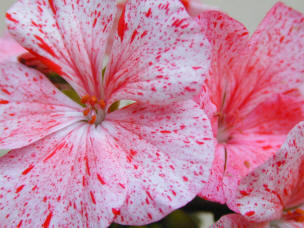Hamamelis - Witch Hazels Care and Growing
Hamamelis - commonly known as Witch Hazels - are a group of winter flowering shrubs, which are happy to flower regardless of weather conditions for much of the winter. They have a range of flower colours - but mainly yellow - which are attractive spider-like blooms along generally spreading but upright branches.
All types of Hamamelis are deciduous, and generally have good - sometimes spectacular - foliage colours before leaf fall in autumn.
Other than being seen in large gardens and estates, Hamamelis are not often planted in private gardens. This is surprising, seeing as the Witch Hazel is virtually maintenance-free and will grow in most garden soils. They are also happy in most situations between woodland shade and full sun. There is no 'gardening mystique' about growing one of these shrubs, and given that it has a quite open growth habit and is not a provider of dense shade, it can be under-plated with a wide range of complimentary subjects, and well suited to having bulbs naturalised at the base.
That's the end of the 'commercial'. Now down to the basic facts.
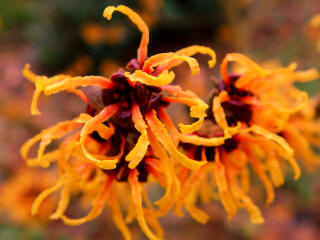 Growing Hamamelis - Witch Hazels
Growing Hamamelis - Witch Hazels
All of the Witch Hazels have an ultimate height of around 12ft - 4m and a slightly less spread. They are one of the few shrubs which will give height and body to shrub beds, or at rear of herbaceous borders, without being overly intrusive. Most grow from a low central stem at the base and then send spreading but upright branches which are lightly clad with attractive foliage. The shrubs are grafted onto the ground-level stem, so do not form a clump or thicket, nor do they spread at ground level .
Soil Preference for Hamamelis
Hamamelis will grow in virtually any garden soil, but do not fare quite so well in alkaline conditions, though they tolerate to a certain degree, if bolstered with a good annual mulch of organic material. Woodland settings normally provide an neutral to acid soil and this is where they seem to grow best.
Planting Position
Bear in mind their ultimate height - 12 ft max and slowly - when choosing a planting position, for mature Hamamelis do not transplant well. Neither do they require routine pruning, so growth is not generally kept in check. Witch Hazels are slow growing - rarely more than 10in per year - decreasing as the shrub matures, so the ultimate size may take up to 15 or more years to attain.
Hamamelis are happy in full sun - as a specimen in lawn centre for instance, or can be blended into shrub and perennial borders or woodland settings.
Pruning Hamamelis
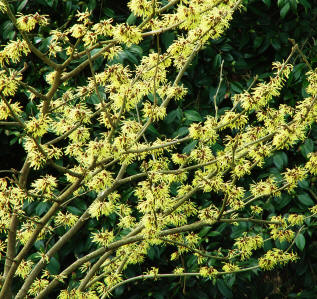 Pruning
Hamamelis is not an issue. Don't do it! However, life being as it is, if
you need to carry out any training or formative pruning, or removal of
the odd branch, then do it in the winter dormancy period. this may mean
that you will be cutting off the potential flowering wood for that
season. Best not to do unless absolutely essential.
Pruning
Hamamelis is not an issue. Don't do it! However, life being as it is, if
you need to carry out any training or formative pruning, or removal of
the odd branch, then do it in the winter dormancy period. this may mean
that you will be cutting off the potential flowering wood for that
season. Best not to do unless absolutely essential.
Problems with Hamamelis
Nothing to worry about - other than if you are in a Honey Fungus
area. They are sometimes affected by this disease.
The stems may also suffer - rarely - from coral spot disease. There is
no available 'cure' for this fungus, but providing the plant is growing
well, it is rarely a problem of Witch Hazels. It prefers a weakened
shrub.
Hamamelis are prone to sending up suckers from the base. These should be removed as soon as noticed (The foliage is different) for they will eventually take over the plant, and you will be left with a poor specimen.
Types of Witch hazel Hamamelis
Hamamelis are split into two main popular groups for gardening purposes - being Hamamelis mollis types and Hamamelis x intermedia cultivars. The growth habits of both are similar, and the flower colour range is to be found in both types. Hamamelis mollis are simply better known because they have been around longer, but I think you will find that the Hamamelis x intermedia types will be more spectacular.
Hamamelis mollis
Hamamelis mollis - The
grand daddy of this group...
Hamamelis mollis 'Boskoop' - a stunning compact golden
yellow - fragrant
Hamamelis mollis 'Brevipetala' - Smaller - gold - but densely
grouped flowers - fragrant
Hammelis mollis 'Coombe Wood' - Wide, spreading habit. Well
scented
Hamamelis x intermedia
Head of this group, resulted from a cross hybridization of Hamamelis mollis and Hamamelis japonica. (Now you can see why this group is 'younger' than Hamamelis mollis).
Hamamelis x intermedia 'Jermyns' - Good golden yellow form of Witch
Hazel. Spreading - but slowly
Hamamelis x intermedia 'Allgold' - Smaller flowers than most,
but very showy and flowers for at least two months.
Hamamelis x intermedia 'Arnold Promise' - Some of the largest
of the Hamamelis flowers - bright yellow
Hamamelis x intermedia
'Diane' - A stunning red variety,
spring flowering scented at that. Good
autumn foliage colour of orange yellow and reds.
Hamamelis x intermedia
' Jelena' - Beautiful coppery bronze flowers and very prolific. Same
colours for the autumn foliage as well!
Hamamelis x intermedia
'Pallida' - Upright but spreading habit. Bright sulphur-yellow
flowers. I have found this to be well-scented.
Hamamelis x intermedia 'Sunburst' Upright growing and well
suited to a smaller overhead space. Pale yellow flowers and plenty of
them
Hamamelis x intermedia 'Vesna'
- Large flowers, bright yellow and with attractive red markings at base
of petals
Hamamelis x intermedia ' Glowing Embers'. Not as red as
Diane. More orange red, but very good.
Hamamelis x intermedia ' Orange Peel'. The colour not texture
of orange peel - just.
Hamamelis x intermedia
'Orange Beauty'. I liked this a lot when I found it.
Hamamelis x intermedia ' Strawberry Cream' Some would consider
a bit 'wishy-washy' but a nice variation.
And so the list goes on.............
Best Selling Gardening Products
Popular Gardening Sections
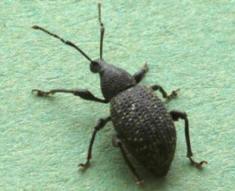
Problems
Identify Weeds in The Garden - How to deal with weeds. Diseases and Pest which harm your garden and plants, learn how to prevent, deter and erradicate your garden problems.
Garden Problems
Pruning
Pruning Guide. Shrubs flower better with correct pruning. Many illustrations and examples of what to do - and when. Includes evergreens, roses, flowering shrubs, spring flowering shrubs and pruning for stem effect. This is our most viewed and comprehensive section,
Pruning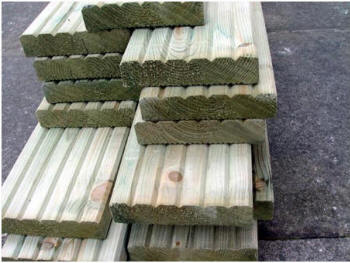
Gardening Businesses
Gardening Businesses listed in the UK counties and USA states. County and State Listings of businesses involved in Garden supplies and services. If you wish to be added to the Directory, please send us your information. Having problems, use the search box
Businesses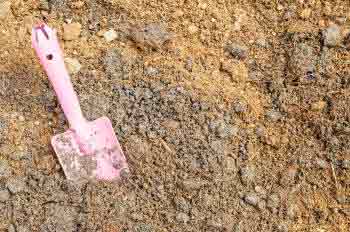
Gardening
In this section you will learn about Gardening Basics, Containers, Landscaping, Propagation and Soil.
Gardening
Gardening Gifts
Gardening Gifts and Reviews, Read Before you Buy
- Gardening Gifts Ideas
- Gifts For Her
- Gifts For Men
- Power Tool Gifts
- Cheap Gifts
- Personalised Gifts
- Wildlife Gifts
- Family Gifts


